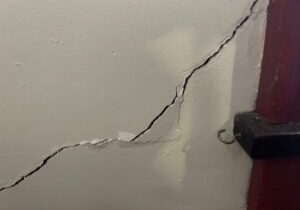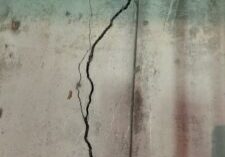Foundation Crack Repair: Restoring Strength and Stability to Your Home
Award Winning Foundation Crack Repair Specialists
Walls and foundations can crack for various reasons, and understanding the underlying causes is crucial for proper diagnosis and effective repairs. Here are some common reasons why walls and foundations may develop cracks, requiring you to turn to a foundation repair expert:
Settling and Shifting Soil: Changes in the soil beneath and around a foundation are a primary cause of cracks. Saturated soils following periods of heavy rain can swell when they absorb moisture but they can also shrink quickly during prolonged hot, dry periods. Extreme weather may cause the foundation to shift or settle unevenly. These bowing walls or settling foundations can lead to cracks in the foundation walls.
Settlement or Heaving: Changes in the ground level, whether due to settling or heaving, can stress the foundation and result in cracks. This can be caused by geological factors or human activities such as excavation, construction, or the removal of large trees.

Poor Construction: Inadequate foundation design, subpar construction materials, or improper construction practices can result in structural weaknesses that lead to cracks over time. Flaws in the original construction may include insufficient reinforcement, improper concrete curing, or inadequate drainage systems.
Seasonal Cycles: Anyone who has lived in the St. Louis area for a long time understands that our high-density clay soils tend to expand and contract throughout the year. In winter, the freeze-thaw cycle can contribute to cracks. When water infiltrates the concrete and then freezes, it expands, putting pressure on the structure. This cycle of freezing and thawing can lead to the development of cracks over time. During a drought, the lack of rainfall and reduced moisture in the soil can cause it to contract. This shrinkage can lead to the settlement or sinking of the foundation resulting in the foundation becoming uneven or developing cracks.

Poor Drainage: Inadequate or improperly functioning drainage systems can lead to water pooling around the foundation. Excess moisture can weaken the foundation and contribute to cracking.
Identifying the specific cause of cracks is essential for determining the appropriate repair method. While some cracks may be cosmetic and not indicative of serious structural issues, others may require immediate attention to prevent further damage. Call Stratum Structural Systems today. We will schedule a convenient time for your schedule and come out to inspect the severity of the cracks and recommend the most suitable course of action for repair and prevention.
Exploring Effective Solutions: Types of Foundation Crack Repair
To assess the condition of your foundation, and for dependable crack repair, trust the pros at Stratum Structural Systems.
Epoxy/Urethane Injections for Foundation Cracks
Polyurethane injection is one of the most common and inexpensive methods used to repair foundation cracks. The injected resins travel quickly through the entire thickness of the foundation, expand and fill any void in the wall. When it comes in contact with water, this resin quickly expands to form a tough, flexible closed-cell foam which bonds extremely well to concrete. When cured, it becomes an extremely effective barrier against water penetration.
Epoxy and urethane injections are a very effective way to seal cracks without having to incur costs of other labor-intensive methods which might include excavating from the outside.
Some foundation cracks require additional structural support to provide a long-term repair. Some of these methods include injecting with structural epoxy resins or applying high strength carbon fiber.

Carbon Fiber Repair for Foundation Cracks
Carbon fiber is an affordable, lightweight reinforcement material which is at least 5 times stronger than steel. It is used in various industries including the aerospace, automotive and athletic equipment industries and of course, foundation crack repair. It can also be used in the construction of bridges, tunnels, and parking structures.
Carbon fiber is applied using structural epoxy resins to the concrete or block foundation wall to provide additional tensile strength, leaving the wall stronger than it was before. The smooth, flat finish can be easily painted or covered with traditional basement finishing systems.













